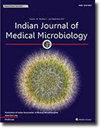High public demand and acceptance of newer vaccines in private sector immunisation in Vellore, South India: Implications for India's national immunisation program
IF 1.4
4区 医学
Q4 IMMUNOLOGY
引用次数: 0
Abstract
Objectives
New vaccines licensed, but not included in Expanded Programme on Immunisation (EPI) in India are used exclusively in the private sector. Quantitative data on their public acceptance and demand are lacking. The Well Baby Immunisation Clinic of our private not-for-profit tertiary care teaching institution provides both EPI and new (licensed non-EPI) vaccines giving us the opportunity to document their uptake trends.
Methods
The volumes of EPI and non-EPI vaccines delivered during the last two decades (2003–2023) were analysed for relative comparison of their time trends and trendlines.
Results
This long-term analysis shows high public acceptance and demand for several new vaccines. The volume of EPI vaccines was relatively stable, ranging from 44684 to 70499. ‘New vaccines’ uptake rose from 8333 in 2003–110783 in 2015. From 2006 till 2012, Measles Mumps Rubella (MMR), Typhoid, Hepatitis A Vaccine (HAV) and Varicella, and from 2014 Influenza were the new vaccines in most demand. In 2020 despite the COVID pandemic, newer vaccines were in significant demand, especially Influenza vaccine. In 2023, the newer vaccines doses most dispensed in increasing order were HAV, Typhoid, Varicella and Influenza.
Conclusions
Perceived community disease burden is reflected by public acceptance and demand of vaccines against vaccine preventable diseases (VPDs). In the absence of robust case-based surveillance data for most VPDs, public acceptance and demand could be considered a criterion for prioritization of ‘new vaccines’ to be included in routine immunisation schedules. Thus, vaccines against Hepatitis A, Typhoid, Varicella and Influenza can be considered favourably for inclusion into EPI in India.
《印度南部Vellore私营部门免疫接种对新疫苗的高公众需求和接受:对印度国家免疫规划的影响》。
目标:印度已获得许可但未列入扩大免疫规划的新疫苗仅在私营部门使用。公众对它们的接受程度和需求缺乏定量数据。我们私立非营利性三级保健教学机构的Well婴儿免疫诊所提供扩大免疫接种和新的(许可的非扩大免疫接种)疫苗,使我们有机会记录它们的吸收趋势。方法:分析近20年(2003年至2023年)扩大免疫和非扩大免疫疫苗的交付量,对其时间趋势和趋势线进行相对比较。结果:这项长期分析显示公众对几种新疫苗的接受度和需求很高。扩大免疫疫苗的数量相对稳定,在44684 ~ 70499支之间。“新疫苗”的接种率从2003年的8333升至2015年的110783。从2006年到2012年,麻疹、腮腺炎、风疹(MMR)、伤寒、甲型肝炎疫苗(HAV)和水痘,以及从2014年起,流感是需求量最大的新疫苗。2020年,尽管出现了COVID大流行,但对新疫苗的需求仍然很大,尤其是流感疫苗。2023年,按递增顺序发放的新疫苗剂量最多的是甲肝、伤寒、水痘和流感。结论:感知社区疾病负担反映了公众对疫苗可预防疾病(VPDs)疫苗的接受程度和需求。在缺乏针对大多数vpd的基于病例的可靠监测数据的情况下,公众接受度和需求可被视为优先考虑将“新疫苗”纳入常规免疫计划的标准。因此,可以考虑将甲型肝炎、伤寒、水痘和流感疫苗纳入印度的扩大免疫方案。
本文章由计算机程序翻译,如有差异,请以英文原文为准。
求助全文
约1分钟内获得全文
求助全文
来源期刊

Indian Journal of Medical Microbiology
IMMUNOLOGY-
CiteScore
2.20
自引率
0.00%
发文量
154
审稿时长
73 days
期刊介绍:
Manuscripts of high standard in the form of original research, multicentric studies, meta analysis, are accepted. Current reports can be submitted as brief communications. Case reports must include review of current literature, clinical details, outcome and follow up. Letters to the editor must be a comment on or pertain to a manuscript already published in the IJMM or in relation to preliminary communication of a larger study.
Review articles, Special Articles or Guest Editorials are accepted on invitation.
 求助内容:
求助内容: 应助结果提醒方式:
应助结果提醒方式:


